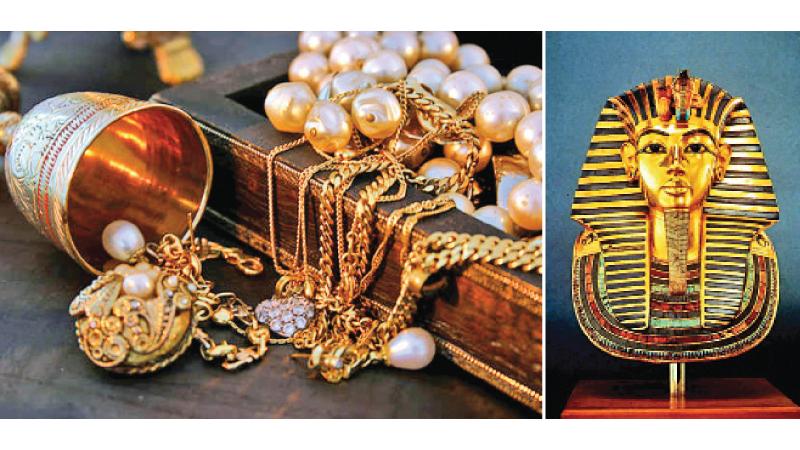
Gold has been used to make jewellery, coins, statues and crafts since ancient times. It is not a mistake to mention it as a precious metal used not only for making jewellery, coins, statues and craft, but also for decoration of buildings, monuments and statues.
Since it does not corrode like other metals, gold metal has been used in many ancient cultures as a symbol of immortality and power. Gold, a rare and expensive metal, was no doubt a fine reflection of the position and status of the rich.
Archaeological evidence suggests that gold was first discovered by ancient humans in the lowlands of small rivers in Asia Minor (the western peninsula of the Asian continent), such as the Pactolus River in Lydia (present-day Turkey).
Egyptians
The Egyptians began mining underground gold around 2000 BC, and later the Romans began mining gold in countries such as Africa, Portugal, and Spain.
Jewellery was popular among the inhabitants of the ancient world because of its value, beauty and durability (flexibility). In ancient times, the Egyptians wore jewellery made of electrome (an alloy made of a natural combination of gold and silver), and the Sumerians wore jewellery irrespective of their gender around 3000 BC. Gold chains were first made by the inhabitants of Yo (a city belonging to ancient Mesopotamia) in 2500 BC.
The Minoan civilisation that inhabited the Greek island of Crete was credited with making jewellery using gold chains, and they used a wide range of crafts to make necklaces, rings, earrings, crowns and many other varieties of jewellery.
In the making of jewellery, the ancient people mainly used techniques such as grinding the gold metal into various shapes and raising carvings.
South America
The art of jewellery was introduced to South America around 1200 BC by the Chavin civilisation associated with the Kingdom of Peru. Later (around 500 BC) the Nazca people mastered the art of gold casting, and the Romans began to create gold backgrounds to hold precious gemstones.
The addition of pearls to the gold background design, which soon became popular as a fashion, dates back to the Byzantine period.
Gold was first used for making coins by minor Asians in the 8th century. King Chrysostom, who ruled Lydia, began producing coins bearing his own image using pure gold, which he obtained from a gold refinery in the capital, Sardis.
Although the most naturally occurring pure gold metal contains about 5 percent silver, Lydian refined gold using salt and an oven with a temperature between 600 - 800 C. The end result of the silver’s reaction with salt is the formation of silver chloride vapor, leaving only pure gold.
Gold coins were also used extensively by the Mycenaean civilisation later. Although gold coins were popular among the Greeks and Romans, they mostly used silver to make coins.
The most famous gold coin in the history of the ancient world is the Roman Besant Coin, which was introduced by Emperor Constantine and weighed 70 Troy Grain 1 (modern measurements 64.798 milligrams).
Because of the value and beauty of gold, it has been used in the manufacture of tools of political and religious significance, such as crowns and royal chandeliers.
In the ancient world, gold funeral masks were used to represent the social status of the dead, as well as the placement of gold objects in tombs.
Treasure hunters
The Egyptians also placed gold treasures in the pyramids for the benefit of the deceased in the afterlife, which later became the target of treasure hunters
The people of the Inca civilisation associated with the Kingdom of Peru believed that gold metal was the sweat of the sun god Inti. Accordingly, they have used gold metal to make religiously important creations, such as religious masks and sun disks.
There is no doubt that gold metal has been used in the dental industry for over 3,000 years due to its brittle and non-corrosive properties. Gold was also used in Ayurvedic medicine by ancient people, and in the first century, the Roman philosopher Pliny said that gold should be used to heal wounds caused by witchcraft.
